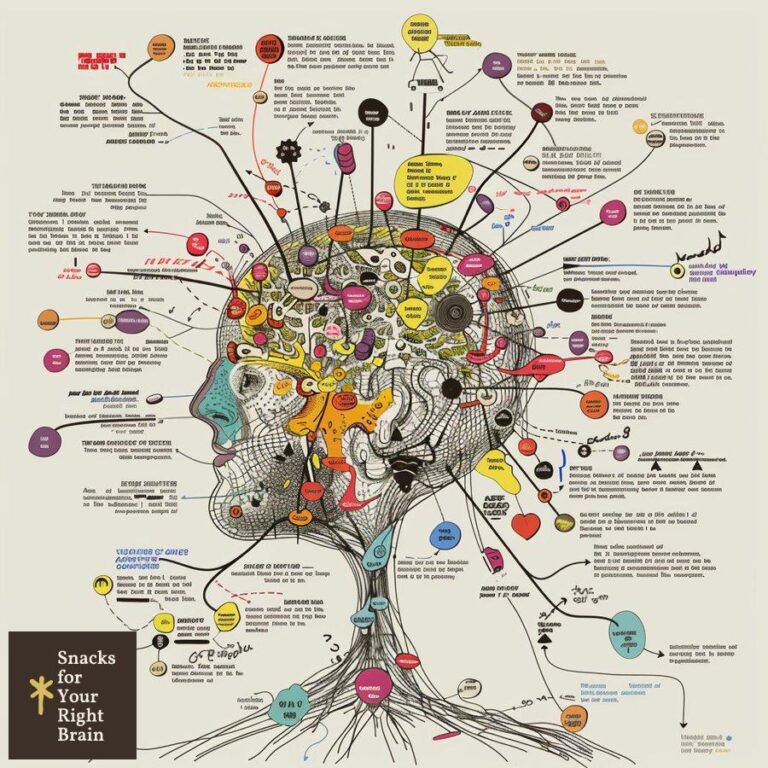What Is an Example of a Twist in a Story
What is a plot twist in storytelling?
A plot twist is an unexpected, surprising, and often shocking turn of events that fundamentally alters the course of a story’s narrative. It challenges the reader’s assumptions, disrupts their expectations, and forces them to reevaluate their understanding of the story and its characters. Plot twists can range from subtle revelations to dramatic, game-changing moments that leave readers reeling and eager to discover what happens next.
The purpose of plot twists
Plot twists serve several key purposes in storytelling:
- They create tension, suspense, and intrigue, keeping readers engaged and invested in the story.
- They add depth, complexity, and layers of meaning to the narrative.
- They allow writers to explore the unexpected, the unconventional, and the extraordinary.
- They challenge readers to think critically, question their assumptions, and engage with the story on a deeper level.
The elements of an effective plot twist
For a plot twist to be truly effective, it must possess several key elements:
- Surprise: The twist must be unexpected and catch the reader off guard, subverting their expectations in a satisfying way.
- Plausibility: Despite its unexpected nature, the twist must be logically consistent with the story’s established rules and characters.
- Significance: The twist must have meaningful consequences for the story and its characters, altering the course of events in a substantial way.
- Foreshadowing: Effective twists are often hinted at or foreshadowed earlier in the story, creating a sense of retroactive inevitability.
How do different types of twists impact a narrative?
Plot twists come in many forms, each with its own unique impact on the story’s narrative:
Revelatory twists
Revelatory twists involve the disclosure of previously hidden information, such as a character’s true identity, a secret from the past, or a shocking revelation about the story’s world or events. These twists often lead to a reevaluation of past events and a shift in the reader’s understanding of the story.
Example: In the film “The Sixth Sense,” the twist that the main character, Dr. Malcolm Crowe (played by Bruce Willis), has been dead all along fundamentally changes the viewer’s perception of the entire film.
Reversal twists
Reversal twists involve a sudden and unexpected change in the direction of the story, often involving a character’s actions or motivations. These twists can lead to a complete shift in the story’s trajectory and force the reader to reconsider their assumptions about the characters and their choices.
Example: In the novel “Gone Girl” by Gillian Flynn, the twist that Amy Dunne (one of the main characters) has been manipulating events all along is a shocking reversal that upends the reader’s understanding of the story.
Twist endings
Twist endings are plot twists that occur at the very end of a story, often in the final moments or pages. These twists can leave a lasting impact on the reader, as they force them to reevaluate the entire story in light of the new information.
Example: In the film “The Usual Suspects,” the twist ending that reveals Verbal Kint (played by Kevin Spacey) as the criminal mastermind Keyser Söze is a shocking revelation that changes the viewer’s understanding of the entire film.
Cumulative twists
Cumulative twists involve a series of smaller twists that build upon each other, creating a sense of increasing complexity and surprise. These twists can create a layered, intricate narrative that keeps the reader engaged and guessing until the very end.
Example: In the television series “Lost,” the many twists and revelations throughout the show’s run, such as the nature of the island and the characters’ backstories, create a cumulative effect that keeps viewers hooked and engaged.
What makes “The Empire Strikes Back” twist so iconic?
The plot twist in “The Empire Strikes Back,” the second installment of the original “Star Wars” trilogy, is widely regarded as one of the most iconic and influential twists in cinematic history. The twist occurs when Darth Vader reveals to Luke Skywalker that he is Luke’s father, a shocking revelation that fundamentally alters the course of the story and Luke’s understanding of his own identity and destiny.
The impact of the twist
The twist in “The Empire Strikes Back” has had a lasting impact on storytelling and popular culture for several reasons:
- Surprise: The twist is completely unexpected, catching both Luke and the audience off guard.
- Significance: The revelation that Darth Vader is Luke’s father changes the entire dynamic between the two characters and sets the stage for the final confrontation in the trilogy.
- Emotional resonance: The twist taps into powerful emotions, such as betrayal, loss, and the search for identity, making it deeply affecting for viewers.
- Iconic status: The line “No, I am your father” has become one of the most famous and quotable lines in cinema history, cementing the twist’s place in popular culture.
The twist’s influence on storytelling
The success of the twist in “The Empire Strikes Back” has influenced countless other stories and has become a blueprint for effective plot twists:
- Foreshadowing: The twist is hinted at earlier in the film, with Vader’s line “I am your father” taking on new meaning in retrospect.
- Significance: The twist has lasting consequences for the story and its characters, shaping the events of the final film in the trilogy.
- Emotional impact: The twist taps into powerful emotions and creates a strong connection between the audience and the characters.
- Rewatch value: The twist encourages viewers to rewatch the film, looking for clues and foreshadowing that they may have missed the first time.
How can writers effectively foreshadow a twist?
Foreshadowing is a crucial element in crafting an effective plot twist. By hinting at the twist earlier in the story, writers can create a sense of retroactive inevitability and make the twist feel more satisfying and impactful for the reader.
Techniques for foreshadowing a twist
Writers can use several techniques to foreshadow a twist:
- Subtle clues: Dropping subtle hints or clues throughout the story that point to the twist, without giving it away entirely.
- Red herrings: Introducing false leads or distractions that make the reader suspect one thing, only to be surprised by the actual twist.
- Thematic foreshadowing: Establishing themes or motifs that connect to the twist, creating a sense of unity and purpose in the story.
- Character behavior: Having characters act in ways that subtly hint at the twist, such as displaying unusual behavior or making cryptic statements.
Examples of effective foreshadowing
Here are a few examples of stories that use foreshadowing to set up their twists:
- “The Sixth Sense”: In the film, there are several subtle clues that hint at the twist, such as the character’s inability to be seen by others and the color red appearing in significant moments.
- “Gone Girl”: In the novel, Amy’s character exhibits behaviors and makes statements that, in retrospect, foreshadow her true nature and the twist that she has been manipulating events all along.
- “The Usual Suspects”: The film uses red herrings and misdirection to make the viewer suspect one character as the mastermind, only to reveal the true culprit in the twist ending.
Why do some story twists fail to engage readers?
While plot twists can be a powerful tool in storytelling, not all twists are equally effective. Some twists fail to engage readers for a variety of reasons:
Lack of foreshadowing
If a twist comes completely out of left field, without any hints or clues to prepare the reader, it can feel like a cheap trick or a deus ex machina. Effective foreshadowing is crucial for making a twist feel satisfying and inevitable.
Implausibility
If a twist violates the established rules or logic of the story’s world, or if it requires the reader to make too many leaps in logic, it can feel contrived and unbelievable. A twist must be consistent with the story’s internal logic and the characters’ motivations.
Lack of significance
If a twist doesn’t have meaningful consequences for the story or its characters, or if it doesn’t change the course of events in a substantial way, it can feel like a gimmick rather than a genuine plot point. A twist should alter the story’s trajectory and force the reader to reevaluate their understanding of the narrative.
Overuse
If a story relies too heavily on twists or if the twists come too frequently, they can start to feel gimmicky and lose their impact. Twists should be used sparingly and strategically, with enough time between them for the reader to process and appreciate their significance.
Lack of emotional resonance
If a twist doesn’t tap into powerful emotions or create a strong connection between the reader and the characters, it can fall flat. An effective twist should make the reader feel something, whether it’s surprise, shock, betrayal, or even a sense of catharsis.
How can authors craft compelling and unexpected twists?
Crafting an effective plot twist requires a combination of skill, creativity, and careful planning. Here are some tips for authors looking to create compelling and unexpected twists:
Start with a strong foundation
Before crafting a twist, authors should have a solid understanding of their story’s themes, characters, and narrative structure. A twist should feel like a natural outgrowth of these elements, not a forced attempt at surprise.
Establish plausibility
As mentioned earlier, a twist must be consistent with the story’s internal logic and the characters’ motivations. Authors should carefully consider how the twist will fit into the existing narrative and how it will impact the characters and their relationships.
Foreshadow subtly
Effective foreshadowing is crucial for making a twist feel satisfying and inevitable. Authors should plant subtle clues and hints throughout the story, without giving the twist away entirely. Red herrings and misdirection can also be used to keep the reader guessing.
Subvert expectations
The best twists are often the ones that subvert the reader’s expectations in an unexpected way. Authors should consider how they can turn common tropes and conventions on their head, creating a twist that is both surprising and satisfying.
Tie it to character
A twist should have a strong emotional impact on the characters and their relationships. Authors should consider how the twist will affect the characters’ motivations, goals, and decisions, and how it will change the dynamics between them.
Consider cultural context
The reception of a twist can be influenced by cultural context and reader expectations. Authors should consider how their twist will be perceived by their target audience and whether it will resonate with them on a cultural level.
Avoid predictability
Authors should strive to create twists that are unexpected and unpredictable. Overused tropes and cliches should be avoided, and authors should aim to create something fresh and original.
What role do twists play in reader engagement and marketing?
Plot twists play a significant role in engaging readers and marketing stories:
Engagement
Twists create tension, suspense, and intrigue, keeping readers engaged and invested in the story. The anticipation of a twist can keep readers turning pages, while the twist itself can leave them eager to discover what happens next.
Memorability
Iconic twists, such as the revelation in “The Empire Strikes Back,” can become deeply embedded in popular culture and the collective consciousness. These twists are memorable and quotable, making them powerful marketing tools.
Rewatch/reread value
Effective twists encourage readers to revisit the story, looking for clues and foreshadowing that they may have missed the first time. This repeat engagement can lead to increased sales and a loyal fanbase.
Marketing potential
Twists can be powerful marketing tools, generating buzz and excitement around a story. Teasing a twist or keeping it a secret can create anticipation and intrigue, drawing in readers and viewers.
Emotional impact
Twists that tap into powerful emotions, such as surprise, shock, or betrayal, can create a strong emotional connection between the reader and the story. This emotional resonance can lead to increased engagement and loyalty.
How have famous literary twists influenced the art of storytelling?

Famous literary twists have had a significant impact on the art of storytelling, shaping the way writers craft their narratives and engage their readers:
“The Turn of the Screw” by Henry James
The ambiguous ending of this novella, which leaves the reader questioning whether the supernatural events were real or a figment of the narrator’s imagination, has influenced countless other stories that play with unreliable narrators and ambiguous endings.
“The Lottery” by Shirley Jackson
The shocking twist ending of this short story, in which the protagonist is stoned to death by her own community, subverts the reader’s expectations and forces them to confront the dark underbelly of human nature.
“The Ones Who Walk Away from Omelas” by Ursula K. Le Guin
This short story presents the reader with a moral dilemma, asking them to consider the cost of a utopian society. The twist ending, in which the reader learns of the suffering that sustains Omelas, challenges them to question their own moral assumptions.
“The Handmaid’s Tale” by Margaret Atwood
The novel’s ambiguous ending, in which the reader is left wondering about the fate of the protagonist, has influenced countless other stories that play with open-ended conclusions and leave the reader to draw their own conclusions.
“The Sixth Sense” by M. Night Shyamalan
As mentioned earlier, the twist ending of this film, in which the viewer learns that the protagonist has been dead all along, has become a blueprint for effective plot twists in cinema and has influenced countless other stories that play with unreliable narrators and shocking revelations.
What techniques can writers use to subvert audience expectations?

Writers can use a variety of techniques to subvert audience expectations and create compelling plot twists:
Misdirection
Introducing false leads or distractions that make the reader suspect one thing, only to be surprised by the actual twist. This technique is often used in mystery and thriller stories to keep the reader guessing.
Unreliable narrators
Presenting the story from the perspective of a narrator whose reliability is called into question, either through their own mental state or through the revelation of hidden information. This technique can be used to create ambiguity and uncertainty in the reader’s mind.
Trope subversion
Turning common tropes and conventions on their head, creating a twist that is both surprising and satisfying. This technique can be used to create a fresh take on a familiar story or genre.
Foreshadowing
As mentioned earlier, planting subtle clues and hints throughout the story that point to the twist, without giving it away entirely. This technique can be used to create a sense of retroactive inevitability and make the twist feel more satisfying.
Character development
Crafting characters whose motivations and behaviors evolve over the course of the story, leading to unexpected twists and revelations. This technique can be used to create a sense of authenticity and realism in the characters’ actions.
Structural experimentation
Playing with the structure of the story, such as using flashbacks, flashforwards, or nonlinear narratives, to create unexpected twists and revelations. This technique can be used to create a sense of disorientation and uncertainty in the reader’s mind.
Thematic resonance
Connecting the twist to the story’s themes and motifs, creating a sense of unity and purpose in the narrative. This technique can be used to make the twist feel more meaningful and impactful for the reader.
How do cultural contexts affect the reception of plot twists?
The reception of a plot twist can be heavily influenced by cultural context and reader expectations. What might be considered a shocking and unexpected twist in one culture could be seen as predictable or cliched in another:

Genre conventions
Different genres have different conventions and expectations when it comes to plot twists. For example, a twist ending in a mystery story might be expected and even anticipated by readers, while a twist in a romance story might be more surprising and impactful.
Cultural values and beliefs
The cultural values and beliefs of the reader can also affect their reception of a twist. A twist that challenges or subverts those values might be seen as controversial or even offensive, while a twist that reinforces them might be seen as more satisfying and meaningful.
Familiarity with the story
If a reader is already familiar with the story, either through previous readings or through adaptations in other media, their expectations and reactions to the twist might be different than those of a reader encountering the story for the first time.
Generational differences
Younger readers might have different expectations and reactions to plot twists than older readers, based on their exposure to different stories and genres. A twist that feels fresh and innovative to one generation might feel derivative or predictable to another.
Sociopolitical context
The sociopolitical context in which a story is read can also affect the reception of its plot twists. A twist that feels relevant and impactful in one era might feel dated or irrelevant in another, depending on the issues and concerns of the time.
In conclusion, plot twists are a powerful tool in storytelling, capable of creating tension, suspense, and intrigue while challenging readers to think critically and engage with the story on a deeper level. Effective twists are surprising, plIn conclusion, plot twists are a powerful tool in storytelling, capable of creating tension, suspense, and intrigue while challenging readers to think critically and engage with the story on a deeper level. Effective twists are surprising, plausible, significant, and often foreshadowed, enhancing the narrative and enriching the reader’s experience.
The importance of reader engagement
Reader engagement is paramount in storytelling, and plot twists play a significant role in maintaining that engagement. A well-executed twist can provoke strong emotional responses, encouraging readers to reflect on their assumptions and the story’s themes. This engagement can lead to deeper discussions, analyses, and interpretations of the narrative, further enriching the reading experience.
The balance of expectation and surprise
Crafting a successful plot twist involves striking a balance between reader expectations and surprise. Understanding genre conventions and audience familiarity allows writers to play with expectations, leading to twists that feel both surprising and earned. This delicate balance ensures that twists resonate with readers and leave a lasting impact.
The evolving nature of storytelling
As storytelling evolves, so do the techniques and expectations surrounding plot twists. Modern audiences are often more sophisticated and familiar with narrative structures, requiring writers to innovate and push boundaries. This evolution presents both challenges and opportunities for writers to explore new ways of surprising and engaging their readers.
Conclusion
In summary, plot twists are a vital component of storytelling that can elevate narratives, deepen character development, and enhance reader engagement. By understanding the mechanics of effective twists, employing foreshadowing, and considering cultural contexts, writers can craft compelling and unexpected twists that resonate with their audiences. As the art of storytelling continues to evolve, the role of plot twists will remain significant, challenging both writers and readers to explore the unexpected and embrace the complexities of narrative.






